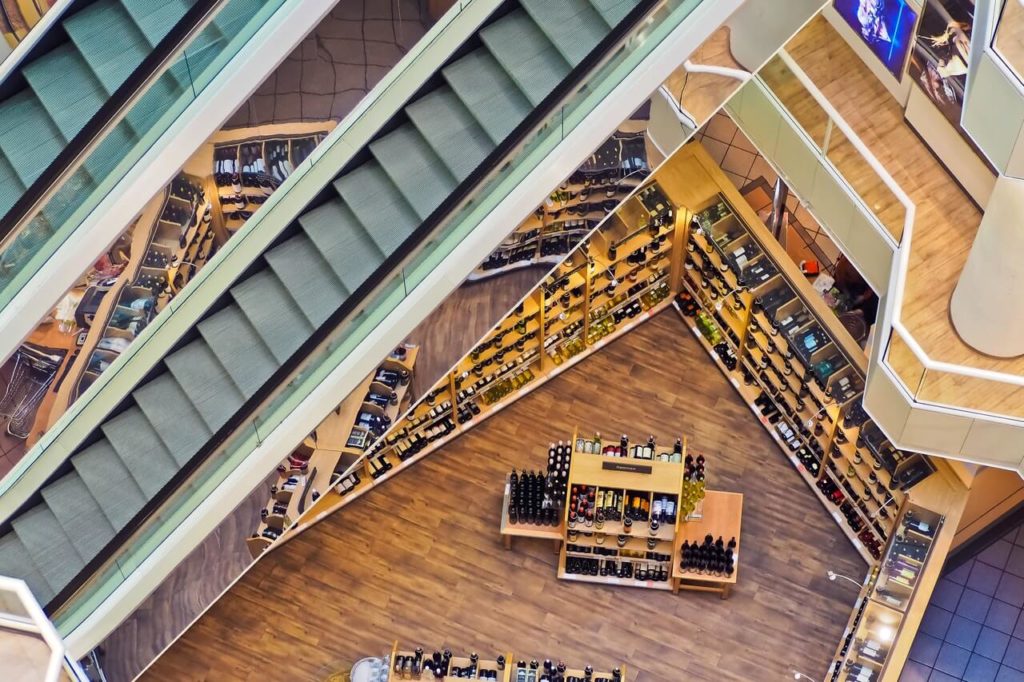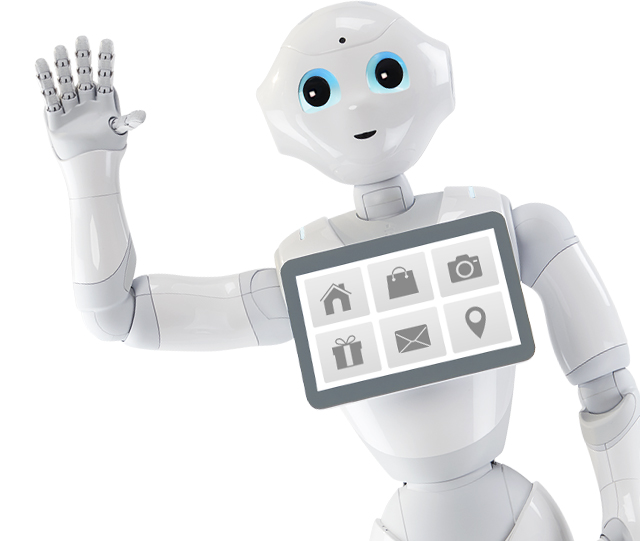Visit the Future Store with us!
Hundreds of years ago, merchants used to travel to stores in other cities to explore new practices, goods and technologies. In this blog, we don’t travel to distant places, but into the future! We get to know some disruptive technologies that can influent commerce soon. Let’s start our journey to the Future Store!

Retail is rapidly changing. Not just because of innovations like e-commerce or payment terminals. The size of the store and the type of goods changed a lot too. In the last 50 years, stores got bigger and bigger.
However, nowadays many of the big stores became obsolete. Retailers remodel their stores, they rent out their empty places for fast-food restaurants and other tenants who provide a wide range of services.
When we travel to the Future Store, we will concentrate on the new technologies physical shops apply. However, this blog is not a futuristic novel, we only focus on disruptive technologies that already exist, but they are not usual yet.
Let’s start the time machine!
Imagine that we travel to 2025 (it’s not so many time in years). We step out from the time machine and realize that we are in a big and crowded city centre.
Relax, we still have a smartphone in our pockets. 📱
It will be an important part of shopping. As we are walking on the street, we get some updates on the phone. They are commercial offers from the shop nearby.
These are trying to attract us into the store to buy something (let’s imagine this is a wine store, selling the best Hungarian wines). But how can a physical store send us notifications? That’s because of a gadget, called beacon.
Beacons are small, wireless devices that transmit a radio signal. That’s how the phone can detect them. The phone can send the ID of the signal to a cloud server. After that, this server pushes notifications.
We happen to get notifications like that: “50% off the best wines of the year!”
Of course, we would like to see those wines!!! 🍷
Stepping into the Future Wine Store
“Stores will be more like websites and websites will be more like stores” – Lifelong Learners: Retail 2020. 5 Technologies that will change the way you shop.
As we step into the wine store, a humanoid robot welcomes us.
“Welcome to our store! My name is Pepper! Before I assist your purchase, please, answer my question. Are you over 18 years old? Please, show me your electronic ID as well!”
The robot has two cameras on its face. We show both parts of our ID’s, then the robot will also check our face with an AI technology called face recognition. We will be identified as adults.
“I am very happy to meet you here! Please download our shopping app!”
That will be an important part of shopping in the future because we can pay by using those apps (to be exact, it’s already used by Amazon Go). We make an account, and the store will send us a receipt and charge our account.

If you don’t want to use the application, you can also pay at the robot, because it has a terminal (accepts card only).
The humanoid robot is a very cute, 1.20 m tall Pepper robot, built by Softbank Robotics. The software and apps of the robot are developed by our company, Netlife Robotics 🙂 There are other Pepper developers like Entrance Robotics in Germany, but we stay at our example. The robot can talk in different languages, it has a tablet in its chest and it can show you special offers on it.
Developers of the robot attached a payment terminal to the robot, below the tablet.
The robot can gesticulate, play the guitar, the saxophone and it can also tell you some (boring) jokes like that: “What does the man say to his dead robot? Rust in Peace”. The one who is laughing the robot itself.
Narrow Artificial Intelligence
The robot is powered by A.I. that’s why it can understand natural language and can speak. Natural Language Processing is very difficult because of the unique grammar rules – and mainly because of the numerous exceptions.
The robot also uses machine vision and face recognition. These are very exciting, but only part of the first level A.I. called narrow A.I. These algorithms are developed to solve certain problems.
So, Pepper the robot assistant is as clever as a human. However, it can do repetitive, boring tasks with better results than people.
In conclusion, the real advance of these technologies that they can collect and manage a huge amount of data. And whoever owns data – owns the service! Moreover, they enhance the customer experience. To clarify, they provide more personalized offers and ensure a safe, fast and touchless shopping.
Let’s choose something in the Future Store
Finally, we are here to buy something delicious! With the help of machine learning, sensor fusion and computer vision, the system can detect if a product is taken from the shelves.
But, we are uncertain about what type of wine should we choose. That’s why the humanoid robot is there! As a “cyber-sommelier”, it knows everything about the products.
We can also use the applications of the store, to find the best offer.
Are there human employees, too?
Of course. Robots do not take our jobs, but they change them. People have to do the creative part of the work, and there will be new types of professions too.
For instance, in this high-quality shop, there will be human sommeliers too. Their job is still valuable because they can share personal experiences and provide face-to-face interaction. They work together with robots.
If we use the app, we can just leave with no checkout (and no lines). The other solution if we pay at the robot’s terminal by card.
As a conclusion
Our journey ends here. We could explore the smart city of the future, with self-driving cars and robot police. However, this blog (and our company) deals with customer service solutions only.
In this blog, we explored the Future Store, that sells wine. We got to know some technologies like beacons, robots and A.I. applications. These enhance customer satisfaction and provide a fast, safe and touchless experience.
We also met some real humans in the store. They do the creative side of the job. Our opinion that robots and A.I. won’t take our jobs, but will change them a lot.
Sources and more readings:
Beacons: Lifelong Learners
Industry insights: retailresearch.org
About Amazon Go
